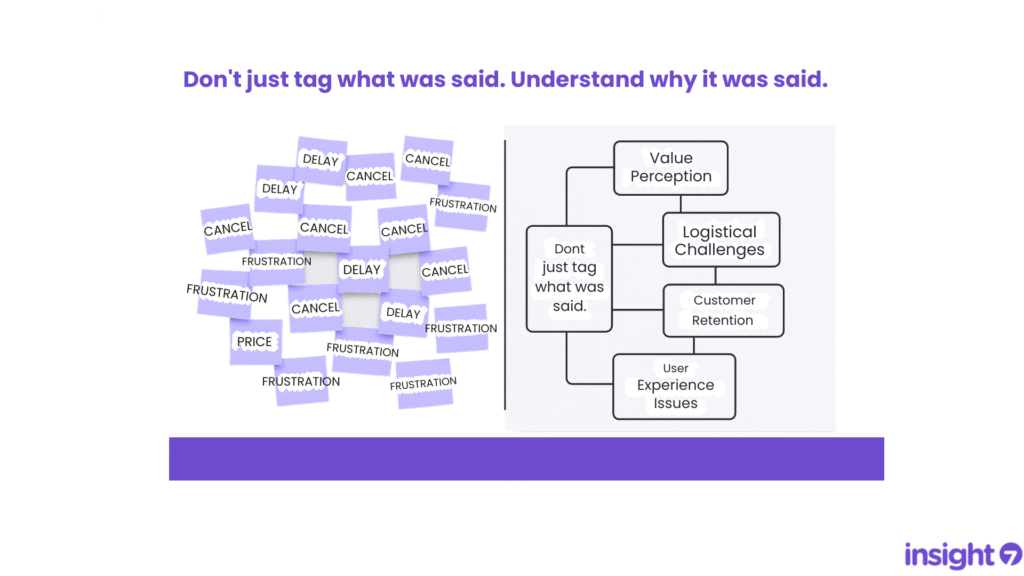Why You Should Stop Tagging Calls by Keywords
-
Kehinde Fatosa
- 10 min read

If you’re tagging calls or survey responses with words like “pricing”, “delay”, or “cancel”, you’re not alone. It’s a common habit for teams trying to organize feedback at scale.
But here’s the problem: keywords aren’t insights.
They tell you what was said, but not why.
The Keyword Trap
Keyword tagging might feel productive, but it can flatten conversations and mask deeper meaning.
For example:
“Pricing” might reflect confusion about value, not the actual price.
“Delay” could mean shipping issues, team inefficiency, or even customer miscommunication.
“Frustration” is a symptom—but what’s the cause?
These tags become placeholders for nuance, leaving teams with dashboards full of words and very little clarity.
From Keywords to Themes
To make sense of feedback, we need to go deeper, beyond what people say to what they actually mean.
That’s where theme detection comes in.
Instead of tagging for keywords, theme detection looks for patterns and connections:
What emotions or outcomes are linked to pricing?
Do customers mentioning delay also talk about missed expectations?
Are certain phrases showing up consistently across different feedback types?
When you analyze for themes, you surface insights that drive smarter decisions.
A Quick Comparison
| Tagging by Keywords | Finding Themes |
|---|---|
| “What” was said | “Why” it was said |
| Disconnected tags | Connected patterns |
| Vague metrics | Actionable insights |
| Manual + repetitive | Scalable + strategic |
Why This Matters
Whether you’re in support, marketing, product, CX, or research, your job is to understand what your customers are really trying to tell you.
Keyword tagging might be a start. But if you stop there, you’re missing:
- Patterns across conversations.
- Emerging risks.
- Opportunities for better experiences.
Insight isn’t a tag. It’s a story you can act on.
Final Thought
If you’re overwhelmed with vague tags and shallow summaries, try this instead:
- Ask: What themes are showing up again and again?
- Connect feedback points instead of labeling them in isolation
- Summarize learnings as narratives, not tag counts







